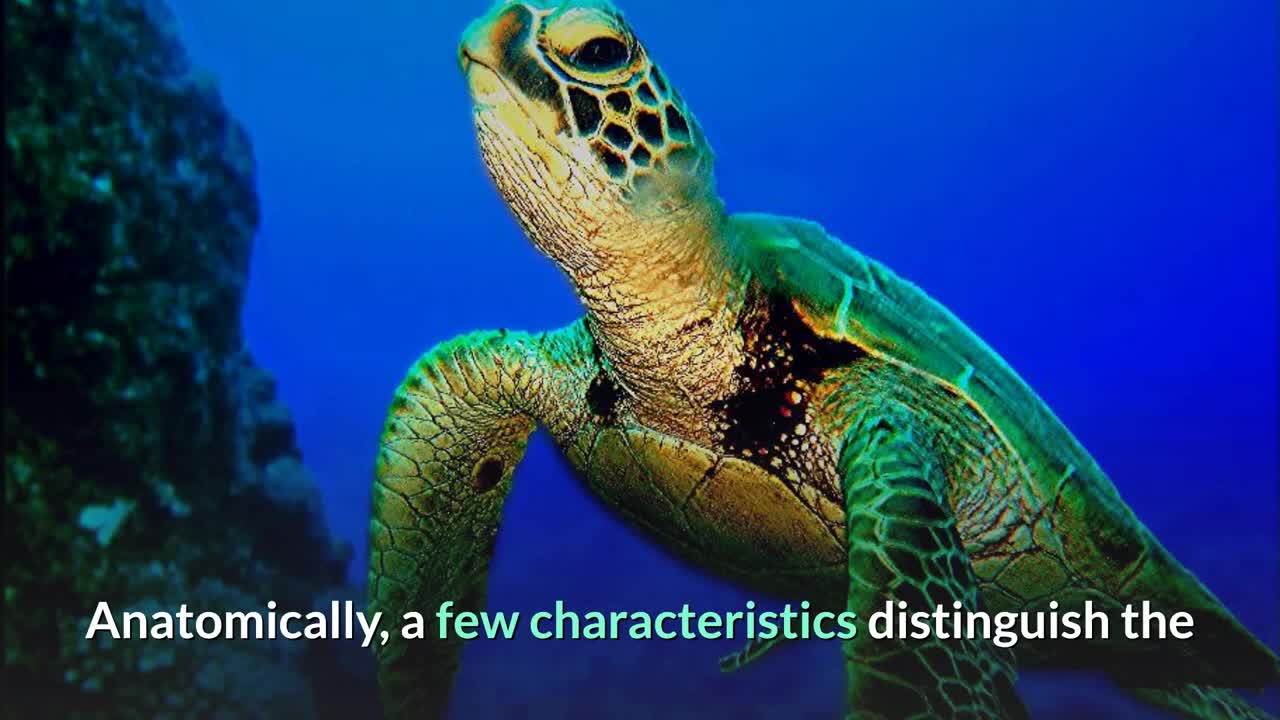Premium Only Content

Green Sea Turtle || Description, Characteristics and Facts! 1.7K views · 1 year ago
0:22
/
4:10
Description
Green Sea Turtle || Description, Characteristics and Facts!
27
Likes
1,708
Views
2020
Oct 30
The green sea turtle (Chelonia mydas), also known as the green turtle, black (sea) turtle or Pacific green turtle, is a species of large sea turtle of the family Cheloniidae. It is the only species in the genus Chelonia. Its range extends throughout tropical and subtropical seas around the world, with two distinct populations in the Atlantic and Pacific Oceans, but it is also found in the Indian Ocean. The common name refers to the usually green fat found beneath its carapace, not to the color of its carapace, which is olive to black.
This sea turtle's dorsoventrally flattened body is covered by a large, teardrop-shaped carapace; it has a pair of large, paddle-like flippers. It is usually lightly colored, although in the eastern Pacific populations parts of the carapace can be almost black. Unlike other members of its family, such as the hawksbill sea turtle, C. mydas is mostly herbivorous. The adults usually inhabit shallow lagoons, feeding mostly on various species of seagrasses. The turtles bite off the tips of the blades of seagrass, which keeps the grass healthy.
Like other sea turtles, green sea turtles migrate long distances between feeding grounds and hatching beaches. Many islands worldwide are known as Turtle Island due to green sea turtles nesting on their beaches. Females crawl out on beaches, dig nests and lay eggs during the night. Later, hatchlings emerge and scramble into the water. Those that reach maturity may live to 80 years in the wild.
C. mydas is listed as endangered by the IUCN and CITES and is protected from exploitation in most countries. It is illegal to collect, harm or kill them. In addition, many countries have laws and ordinances to protect nesting areas. However, turtles are still in danger due to human activity. In some countries, turtles and their eggs are hunted for food. Pollution indirectly harms turtles at both population and individual scales, as well as light pollution. Many turtles die after being caught in fishing nets. Also, real estate development often causes habitat loss by eliminating nesting beaches.
-
 LIVE
LIVE
Lofi Girl
2 years agoSynthwave Radio 🌌 - beats to chill/game to
212 watching -
 2:17:05
2:17:05
FreshandFit
4 hours agoFrom SMALLVILLE to AB'SVILLE w/ Sam Jones III
118K7 -
 3:05:45
3:05:45
Price of Reason
11 hours agoTrump's UN Takedown! BACKLASH Over Disney's Jimmy Kimmel Return! Tulsa King Season 3 Premiere Review
124K17 -
 3:03:12
3:03:12
Badlands Media
13 hours agoDEFCON ZERQ Ep. 010: Government Overreach and the Battle for Freedom
169K57 -
 9:46
9:46
Levi
1 day agoWhy XRP's Bull Run Will Be 10x Bigger Than The Last One - Raoul Pal
7.92K2 -
 20:13
20:13
Paul Barron Network
26 days ago $0.85 earnedXRP Vault Yields Coming in September!?🔥Flare CEO INTERVIEW
9.09K1 -
 3:00:12
3:00:12
TimcastIRL
8 hours agoJimmy Kimmel Show IN CHAOS Before Return, Affiliates REFUSE, Staff Says THEYLL QUIT
360K109 -
 2:49:26
2:49:26
Laura Loomer
8 hours agoEP145: Trump Makes BOMBSHELL Autism Announcement
51.9K19 -
 6:14:04
6:14:04
SpartakusLIVE
9 hours agoEXPLOSIVE $400+ 2v2 Tuesday has viewers GLUED to the screen
63.3K2 -
 3:19:06
3:19:06
GrimmHollywood
8 hours ago🔴LIVE • GRIMM'S TUESDAY FRIGHT NIGHT • STARRING GRIMM HOLLYWOOD • NO, I'M NOT HUMAN PART 1 •
45.8K2